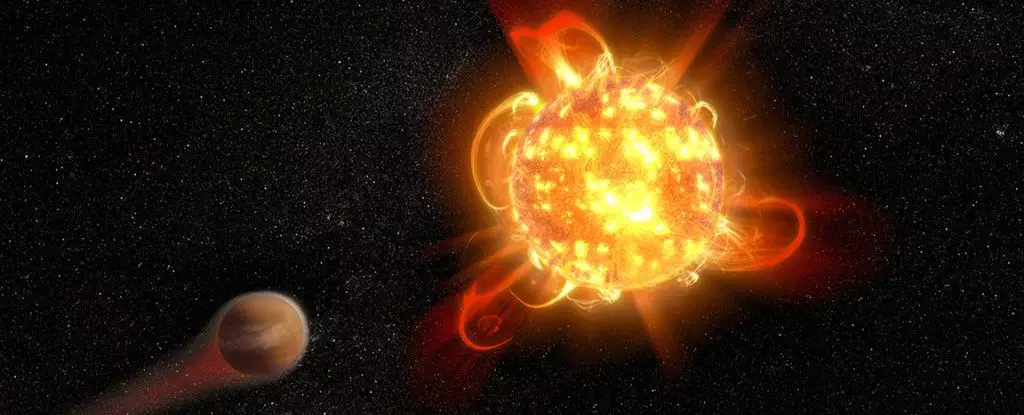Red dwarfs, or M-class stars, represent the most abundant type of star in our galaxy, constituting around 70% of the stellar population in the Milky Way. Their characteristics include lower temperatures compared to our Sun and relatively modest sizes, making them appear like potential safe havens for planetary systems. Imagine a stellar nursery sporting long-living stars, quietly nurturing orbiting planets in an environment conducive to life. However, this seemingly benign portrait begins to crumble when one looks closer at the behaviors of these stars, particularly in regard to their notorious tendency to produce frequent and intense stellar flares.
Stellar Flares and Their Implications
While red dwarfs possess qualities that position them favorably in the search for extraterrestrial life, a cloud looms: their propensity for stellar flares. These powerful ejections of energy result in bursts of radiation that can significantly influence the habitability of surrounding planets. Recent studies have uncovered alarming insights into the nature of these flares, suggesting they might pose a greater risk to potential life than previously understood.
An intriguing paper that emerged this month analyzed over a decade’s worth of observations from the now-retired GALEX space telescope. The researchers scrutinized data from roughly 300,000 stars, zeroing in on 182 flares originating from M-class systems. Unlike prior studies that largely focused on optical wavelengths, this research delved into the ultraviolet (UV) radiation emitted during flare events—a range that has transformative impacts on planetary atmospheres and ecosystems.
Specifically, the paper examined near UV (175–275 nm) and far UV (135–175 nm) emissions which can be both a boon and a bane for planetary development. Despite UV radiation’s potential role in forming complex organic molecules—building blocks crucial for life—excessive doses could severely degrade a planet’s atmosphere. For instance, high-energy photons from stellar flares could strip away vital atmospheric components, including life-sustaining ozone layers. This duality underscores the critical balance required for atmospheric integrity and the establishment of life.
What makes these findings particularly unsettling is the proposition that previous estimates may have grossly underestimated the amounts of UV radiation released during these flares. Historically, scientists modeled stellar radiation on a blackbody distribution curve. This approach suggested a temperature of around 8,727 degrees Celsius for the radiation emitted during flares. However, the current research challenges this longstanding assumption, indicating that the radiation patterns do not conform to expected models. The researchers found that about 98% of the flares they studied emitted significantly more UV light than would be predicted based on standard blackbody calculations.
These revelations force us to rethink what makes a planet habitable. Traditionally, scholars have considered the necessary conditions like surface temperatures allowing for liquid water, proximity to the star, and other physical properties. Emerging evidence suggests it may not just be about the presence of favorable conditions, but also about the stability and safety of those environments in terms of stellar activity.
If red dwarf systems emit unexpectedly high levels of UV radiation, then planets within their habitable zones might be subjected to extreme conditions detrimental to sustaining life forms as we know them. For planets that initially appeared to be suitable for life, the intense radiation from frequent flares could negate the very parameters that classify them as habitable realms.
As we progress in our understanding of red dwarfs and their interactions with their planetary systems, it becomes clear that the search for extraterrestrial life in these environments requires a more nuanced perspective. The broader implications of flare activity and its impact on planetary habitability remind us of the complexity of the universe and the myriad factors that could determine the existence of life beyond Earth.
Red dwarfs showcase fascinating possibilities while simultaneously presenting challenges that we have yet to fully comprehend. As research continues to evolve, it is essential for researchers and enthusiasts alike to remain open-minded and vigilant, ready to adapt our frameworks of habitability to more accurately reflect the realities of these common yet potent stars.


Leave a Reply